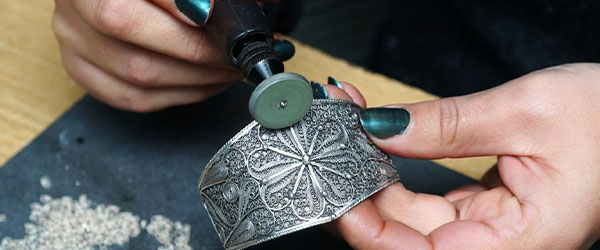New to jewellery polishing and want to learn more about the technical jargon that comes along with the jewellery manufacturing process?
Use our glossary of polishing terms to understand all the tools and terms related to the polishing process.
Polishing
The jewellery polishing process removes small amounts of the metal’s surface, leaving behind a smooth finish that is then prepped and ready for buffing.
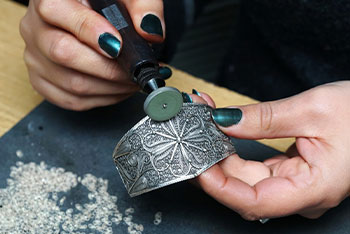
Buffing and Polishing
Buffing and polishing are the two procedures used to produce the final high shine on jewellery. Although often used in conjunction with each other, these are two separate operations.
Different stages of buffing include:
Pre polish – for preliminary smoothing using a very coarse polishing compound and buffing. Buffing is an abrasive process where a small amount of the surface is removed. It will remove minor scratches left after sanding and smooth’s the surfaces, however it will not produce a bright polish.
Final Polishing – The final mirror finish is achieved by polishing. Polishing uses harder compounds such as rouge. With rouge, there is almost no cutting action; it burnishes the metal, moving the surface layer around to smooth the fine scratches left from buffing.
Satin finishing – for a softer finish with low sheen. Scotchbrite wheels are favoured and these are used dry, without polishing compounds
Polishing Motors
Polishing motors polish at a high speed, and are used in conjunction with buffing/polishing mops and polishing compounds. With a variety of designs available (such as pendant motors and polishing motors) polishing motors can run from 5,000 to 18,000 rpm.
When using a polishing motor it is advised to work just below the centre of the buff wheel. Never raise the item above or too far below the horizontal line as this will cause the wheel to grab the item from your hand. A firm pressure should be applied against the wheel, so that you can feel the cutting action, but never press too hard causing the motor to slow down, as excessive pressure will not give a better polish or polish faster however too light of a pressure is also ineffective; try to find that happy medium (it will get easier with practice).
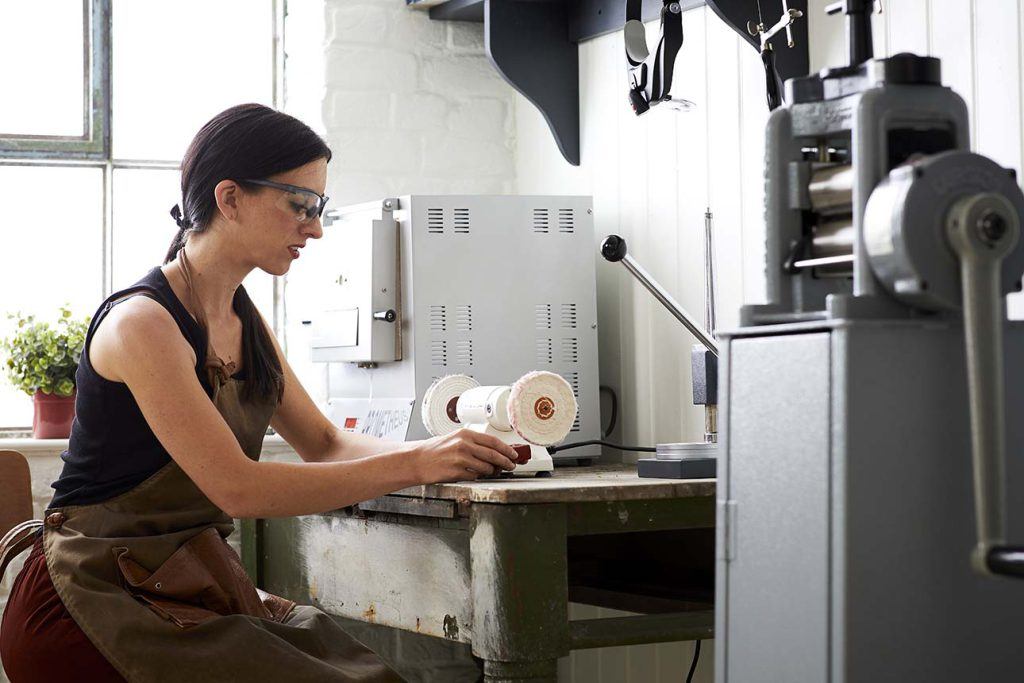
Buffing and Polishing Mops
Mops are wheel-like additions, which are used with polishing compounds, and added to your pendant or polishing motors to buff and polish your jewellery.
Most mops come in sizes from 2 – 6 inches in diameter. Getting to know all the different types of buffing mops can be overwhelming – a good place to start is with our list below.
Mop types include:
· Sewn buffs – The more rows of stitching, the stiffer the mop will be. Sewn buffs are typically used with a cutting compound like Tripoli at the pre polish stage.
· Loose buffs – Loose buffs feature several sections of material with 1 row or no stitching near the centre. Most often used for the final polishing with rouge, they flare out to give wide coverage for those hard-to-reach places and give a smooth polishing surface.
· Bias type buffs – Excellent for both cutting power and flexibility, bias type buffs are typically used for intricate work that requires varied degrees of cutting and finishes.
· Sisal buffs – usually made with strong cloth and used for aggressive cutting and polishing, most often used with Stainless Steel.
· Hard Felt buffs – ideal for flat surfaces and sharp edges as they maintain smooth lines, however care should be taken when using for jewellery purposes as these can produce lines or rings on pieces.
· String buffs – Soft buffs used on precious metals or plastics
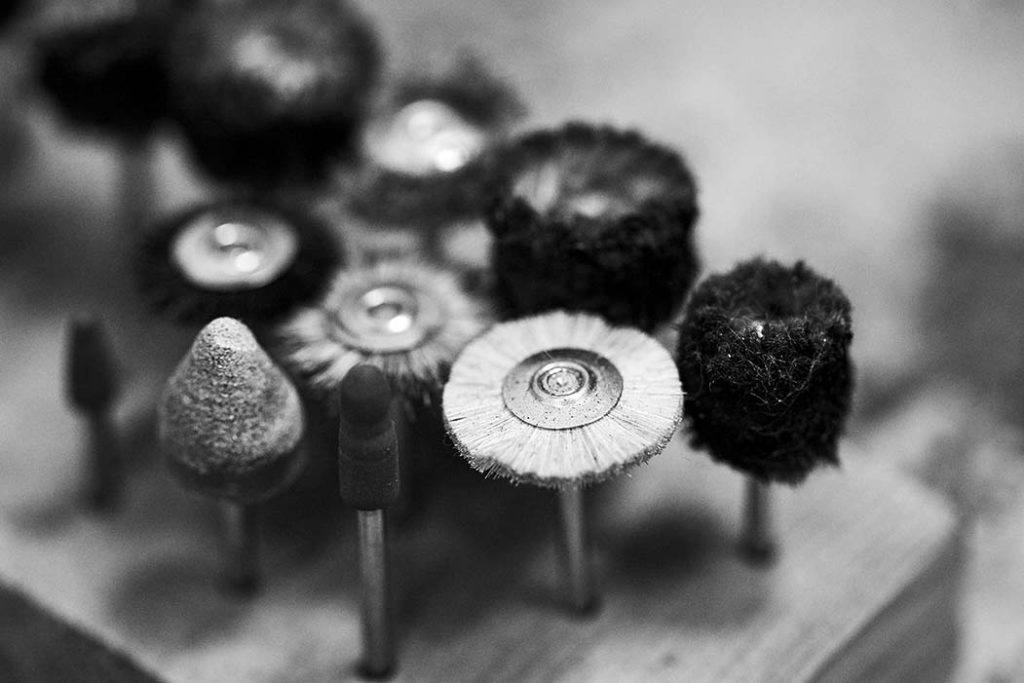
Polishing Compound
Polishing compounds are the greases, waxes, or oils that are abrasive and added to buffing mops. Usually bought in small bars they are used in conjunction with polishing motors and mops, working to smooth and buff metals. The terms buffing compounds and polishing compounds are usually used interchangeably. Jeweller’s rouge is one of the finest polishing compounds helping to bring out the highest shine of the material you’re working with.
Tips for using polishing compounds
Do not overload your buffing/polishing mops with too much compound, it is recommended to reapply the compound when the results indicate it is needed. Move the item consistently to achieve an even finish, if you hold the item for too long in one position it may remove detail and change the shape of the piece. Move the item in every direction and position possible so that the mop reaches all areas, this cross buffing/polishing will also result in a higher shine. If you need to polish a solder joint then run the mop across the joint rather than with it so that you do not buff the solder away.
Learn how to use a buffing mop effectively with our step by step guide, helping you identify the best mops and metal polishing compounds to use as part of the process.
Buffing and polishing mop materials include:
If you want to find out more about the process of using polishing compounds efficiently, check out our guide to using polishing compounds and our polishing compound chart for more details.
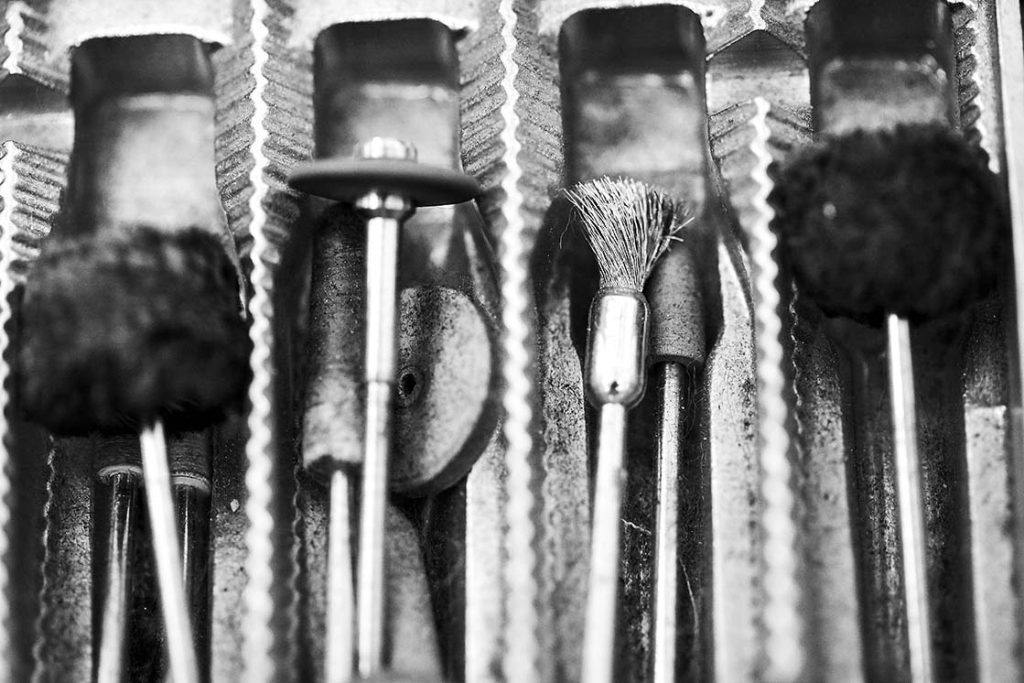
Although difficult at first, the terminology used for polishing can easily be picked up and integrated into your creating process, to gain a better understanding of the craft. Enjoy polishing!

Cooksongold

